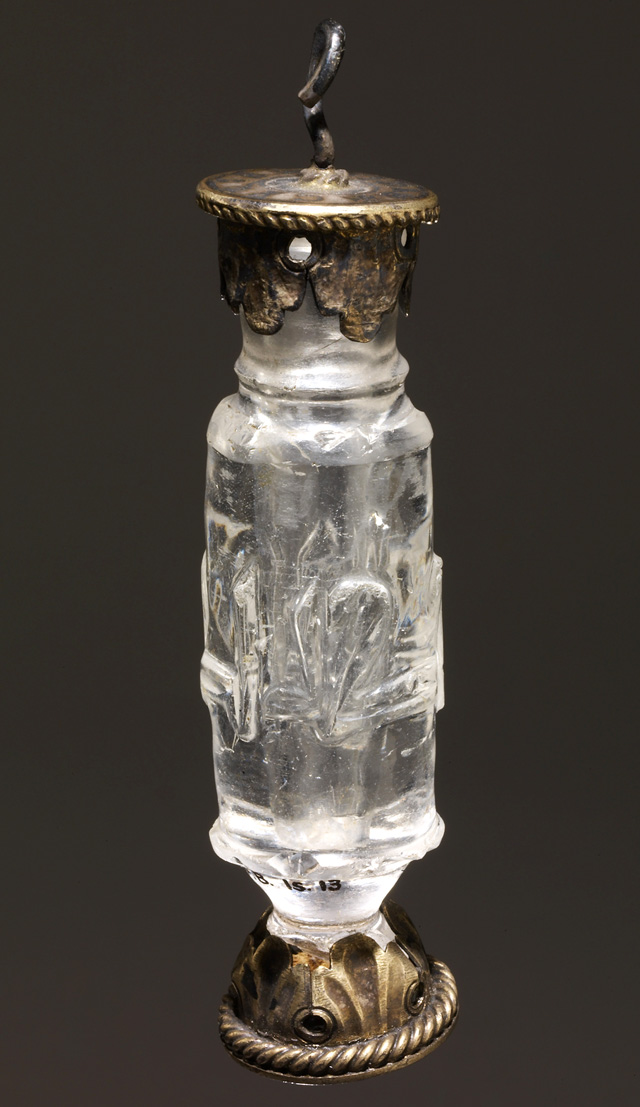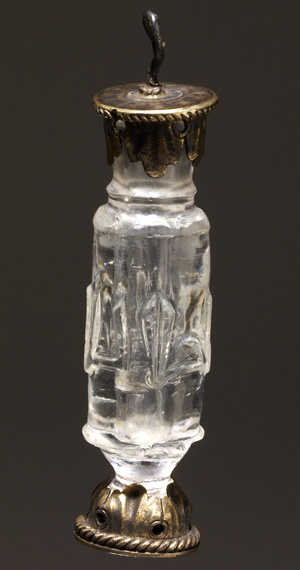Fatimid Flask Reliquary
The British Museum, London
Copyright © The Trustees of the British Museum

 Select the image to zoom
Select the image to zoom
The modest dimensions of this Fatimid rock crystal vessel suggest that it was probably crafted originally as a perfume flask. At some point in the fourteenth century, it was converted to use as a Christian reliquary for suspension. A Latin inscription on the gilded silver cap that seals it implies that the flask once contained "the hair of the blessed Mary." The transparency of rock crystal and its somewhat lenticular quality made it an appropriate choice of material for relics that might be difficult to see. The nail clippings of St. Clare may still be found at Assisi in the Fatimid crystal flask that first contained them in the fourteenth century when it was embellished with gilded silver mounts. Other relics known to have been held by crystal containers include the tears, breath, and blood of Christ. The suitability of rock crystal for use in reliquary manufacture was enhanced by a symbolism recognized by both Christian and Muslim authorities on the nature of materials. The Muslim scholar al-Bı- ru- nı- (973–1050) regarded rock crystal as the most precious of stones, arguing that it combined the elements of air and water. Classical and subsequently Christian theorists took a similar view and saw the crystal as petrified water, an interpretation reinforced by scriptural allusion. The Book of Revelation (22:1) recounts: "And he showed me a pure river of water of life, clear as crystal, proceeding out of the throne of God and of the Lamb." A shared understanding of the symbolic quality of rock crystal accounts for the conversion of this perfume bottle into a reliquary. What is less clear is whether the Arabic inscription carved in relief around the body of the flask was equally understood by its Christian audience. The sentiment "Blessing to its owner" is, of course, entirely appropriate to its Christian use as a repository for a sacred relic.





